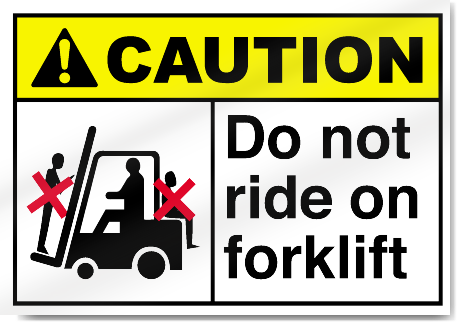

Once you know the load is safe, you then need to safely get in the forklift, and when approaching the load, make sure you: When necessary, use the load extension backrest.Make sure the forklift isn’t overloaded-check the stated capacity for the forklift you’re operating.The heaviest part of the load should be placed on first/closest to the forklift’s front wheels.If it cannot be centered, you’ll need to be extra careful when moving it. Make sure the weight of the load is centered.The load should not be damaged in any way or the wrapping ripped.The load is securely arranged and stable.Here is an example of what to do when operating a forklift to ensure you and your co-workers stay safe.īefore you pick up a load make, sure that: Let’s put what we have discussed into action. Make eye contact with people around you.Make sure you have complete forklift training befoure using.When you park a forklift or leave it unattended, make sure the forks are flat on the ground, the controls set to neutral, and the parking brake is on.Never drive up behind someone unaware you are there.When operating around other forklifts, try to keep your distance from each other (about 3 forklift lengths).When carrying a high load that blocks your vision, drive the forklift in reverse and turn your head around so you can see.Never go around a blind corner before checking first and use the horn when necessary.Make sure no one walks underneath a raised load.When driving the forklift without a load, make sure the forks are kept four to six inches off the ground.When driving with a load, make sure you drive forward when going up the incline and backward when going down the incline. When you are operating a forklift on inclines, ensure that the load is on the uphill side of the incline.Always wear a seat belt when operating a forklift-accidents do happen.These are some common safety rules you must be aware of and follow when operating a forklift: Ensures we all know our responsibilities to maintain a safe workplace (including management).
#Warehouse forklift safety how to
#Warehouse forklift safety manual
They also help reduce the risk of accidents on a worksite as they reduce the amount of manual handling required. Train employees on the hazards associated with the combustion byproducts of forklift operation, such as carbon monoxide.Forklifts save time and money, allowing you to move heavy loads quickly and efficiently.Provide covers and/or guardrails to protect workers from the hazards of open pits, tanks, vats and ditches.Ensure adequate ventilation either by opened doors/windows or using a ventilation system to provide enough fresh air to keep concentrations of noxious gases from engine exhaust below acceptable limits.Maintain sufficiently safe clearances for aisles and at loading docks or passages where forklifts are used.Remove unsafe or defective trucks from service until the defect is properly repaired.Do not handle loads that are heavier than the weight capacity of the forklift.Never drive up to a person standing in front of a fixed object such as a wall or stacked materials.Ensure that the operator wears a seatbelt installed by the manufacturer.Drive safely, never exceeding 5 mph and slow down in congested areas or those with slippery surfaces and on docks and dock plates.Follow safe procedures for picking up, putting down and stacking loads.Before using a forklift, examine it for hazardous conditions which would make it unsafe to operate.Properly maintain haulage equipment, including tires.Do not allow anyone under 18 years old to operate a forklift.Train, evaluate and certify all operators to ensure that they can operate forklifts safely.


 0 kommentar(er)
0 kommentar(er)
